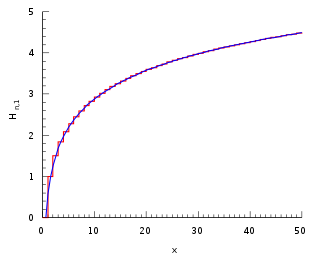The Solution
Let  be a polynomial in two variables of order
be a polynomial in two variables of order  ; where
; where  is a positive integer. The binomial differential equation becomes
is a positive integer. The binomial differential equation becomes  using the substitution
using the substitution  , we get that
, we get that  , therefore
, therefore  or we can write
or we can write  , which is a separable ordinary differential equation, hence
, which is a separable ordinary differential equation, hence

Special cases:
- If  , we have the differential equation
, we have the differential equation  and the solution is
and the solution is  , where
, where  is a constant.
is a constant.
- If  , i.e.,
, i.e.,  divides
divides  so that there is a positive integer
so that there is a positive integer  such that
such that  , then the solution has the form
, then the solution has the form  . From the tables book of Gradshteyn and Ryzhik we found that
. From the tables book of Gradshteyn and Ryzhik we found that

and



































